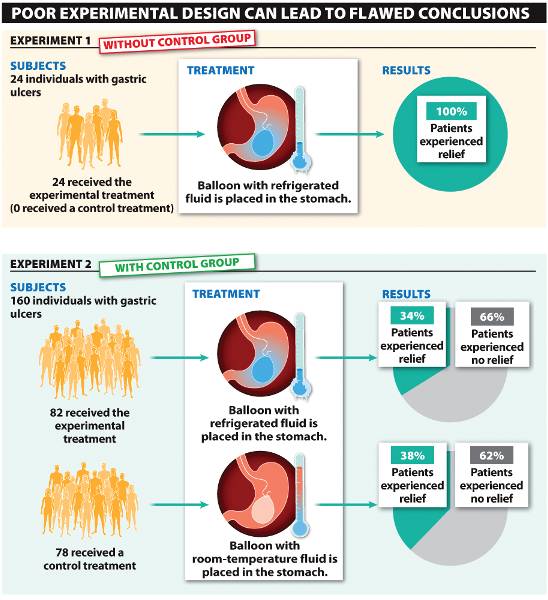
- Experimental group:
exposed to a particular treatment
- Control group:
not exposed to the treatment
A well-controlled experiment allows us to compare results between groups that differ by only one variable.
Placing a balloon with cold or warm fluid in the stomach shows no
real difference in relief from ulcers.
The relief some experienced in both groups may be due to the placebo effect.


